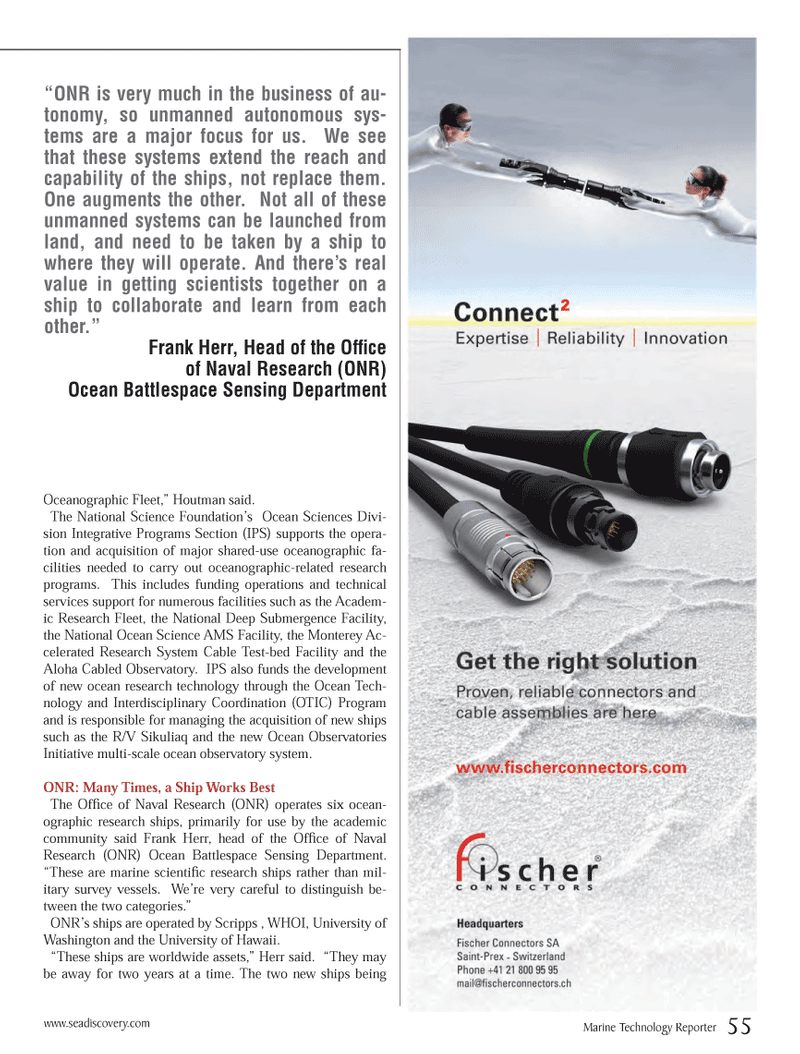
Page 55: of Marine Technology Magazine (September 2013)
Ocean Observation: Gliders, Buoys & Sub-Surface monitoring Networks
Read this page in Pdf, Flash or Html5 edition of September 2013 Marine Technology Magazine
Oceanographic Fleet,? Houtman said. The National Science Foundation?s Ocean Sciences Divi- sion Integrative Programs Section (IPS) supports the opera- tion and acquisition of major shared-use oceanographic fa- cilities needed to carry out oceanographic-related research programs. This includes funding operations and technical services support for numerous facilities such as the Academ- ic Research Fleet, the National Deep Submergence Facility, the National Ocean Science AMS Facility, the Monterey Ac- celerated Research System Cable Test-bed Facility and the Aloha Cabled Observatory. IPS also funds the development of new ocean research technology through the Ocean Tech- nology and Interdisciplinary Coordination (OTIC) Program and is responsible for managing the acquisition of new ships such as the R/V Sikuliaq and the new Ocean Observatories Initiative multi-scale ocean observatory system. ONR: Many Times, a Ship Works Best The Of ce of Naval Research (ONR) operates six ocean- ographic research ships, primarily for use by the academic community said Frank Herr, head of the Of ce of Naval Research (ONR) Ocean Battlespace Sensing Department. ?These are marine scienti c research ships rather than mil- itary survey vessels. We?re very careful to distinguish be- tween the two categories.? ONR?s ships are operated by Scripps , WHOI, University of Washington and the University of Hawaii. ?These ships are worldwide assets,? Herr said. ?They may be away for two years at a time. The two new ships being ?ONR is very much in the business of au- tonomy, so unmanned autonomous sys- tems are a major focus for us. We see that these systems extend the reach and capability of the ships, not replace them. One augments the other. Not all of these unmanned systems can be launched from land, and need to be taken by a ship to where they will operate. And there?s real value in getting scientists together on a ship to collaborate and learn from each other.? Frank Herr, Head of the Of ce of Naval Research (ONR) Ocean Battlespace Sensing Departmentwww.seadiscovery.com Marine Technology Reporter 55MTR #7 (50-65).indd 55MTR #7 (50-65).indd 558/27/2013 10:17:17 AM8/27/2013 10:17:17 AM

 54
54

 56
56
